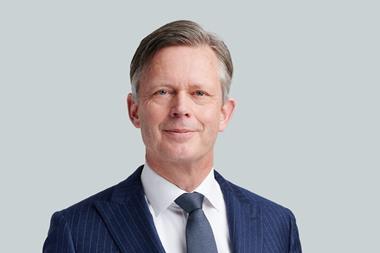Dutch healthcare scheme PFZW has changed its target for 50% CO2 reduction by 2030 from a relative to an absolute one. The pension fund cites “the negative sentiment surrounding relative targets” as a reason for the shift.
Last June, PFZW published the first version of its climate plan. In it, the pension fund announced a target to halve the CO2 emissions of its listed investments. At the time, however, the fund committed only to a 50% reduction in CO2 intensity, falling short of setting a softer absolute target.
In practice, adopting a relative target means companies that grow their market capitalisation or revenues need to reduce less of their emissions than if they would have had an absolute target.
Adopting a relative target has been criticised by market observers. Ortec Finance consultant Willemijn Verdegaal told IPE in 2021: “To meet the Paris targets, you will have to set absolute reduction targets.” Yet, most asset managers still shy away from setting such absolute goals. Some, such as BlackRock, are even yet to set any targets.
Negative sentiment
PFZW is now making the switch to an absolute reduction target “because of the negative sentiment surrounding relative targets”, a spokesperson for the fund explained, while also pointing out that adopting an absolute target makes it easier to compare their emission reduction with peers.
However, of all 14 Dutch pension funds that so far have announced CO2 reduction targets for 2030, only a handful have committed to absolute reduction targets. These include ABP, PME and Bpf Bouw, which all announced these last year.
PFZW aims to achieve its planned CO2 reduction target by cutting emissions from its passively managed equity portfolio by 7% annually through a “CO2 optimisation process”, which may involve cutting back on holdings of relatively large polluters.
The fund has also set reduction targets for corporate bonds: after an initial 20% reduction in 2023 and a further 5% reduction in 2024, annual reductions of between 3% and 7% are to follow between 2025 and 2027.
PFZW has set another concrete climate target: by 2030 8% of investments must be in line with the EU’s new green taxonomy.
“Compared to the target for climate solutions in the [Sustainable Development Goals] SDGs (15%), this may seem low, but the taxonomy’s requirements are considerably more stringent. In addition, data to test these requirements are less readily available,” said PFZW.
A spokesperson added the fund does not yet know what percentage of investments currently already comply with the green taxonomy.
Lower asset management costs, higher pension admin costs
PFZW’s asset management costs fell again last year to 0.42%, below the fund’s maximum cost target of no more than 0.5% assets.
Last year, these costs were exceptionally high because PFZW spent a lot of money on performance fees for private equity managers.
Performance fee payments to private equity managers fell from €1.3bn in 2021 to €206bn in 2022. However, those fees still account for the majority of PFZW’s asset management costs, which totalled €363m.
Pension administration costs increased, although they remain significantly lower than at other large funds such as ABP, PMT and PME. Admin costs rose by €3.28 to €63.82 per participant, mainly due to investments in preparation for the transition to the new pension scheme, which is scheduled for 1 January 2026.
The latest digital edition of IPE’s magazine is now available
































No comments yet